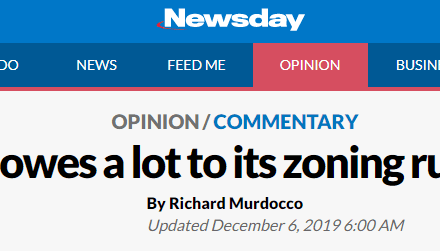The following is a response to a letter to the editor published in Long Island Business News, written by Ann Golob, who is executive director of the Rauch Foundation’s Long Island Index. Golob wrote in response to a piece written by me entitled “Building for the Day That May Never Come” concerning the MTA’s Third Track.
To the Editor,
Ann Golob, who is the director of the Long Island Index project for the Rauch Foundation, recently wrote a response in LIBN to my piece Building for the Day that May Never Come.
In her letter, Golob states that it is ironic that on one hand I point out Long Island’s economic malaise, while pointing out that “it’s the lack of reverse commuting, which the third track would provide, that is leaving Long Island without the jobs that it needs.”
I stand by my piece, and the questions it raises.
Why, as a region, should we be building massive projects without a guaranteed payoff? I ask Golob, and others who are so vigorously reliant upon the third track to save our region, the following – If the Third Track ends at Hicksville, how do we plan to get the reverse commute to the proposed growth centers in Suffolk County? Further, what is the legitimate job growth potential in Nassau compared to Suffolk County?
While Golob relies on the MTA to eventually (if ever) invest in our woefully outdated infrastructure, I feel that the Long Island of the 21st century needs more solutions that are local, short term and flexible. These solutions should be reactionary, and need to be independent of such large scale, uncertain capital works. BRT systems may be the answer within our pre-existing suburban land use patterns, and more feasible thanks to the ability to modify right-of-ways the further east on Long Island we build.
The third track may never be built. Won’t we feel silly watching our large-scale investment in unneeded development decay over the decades, all because we waited for a train that never came.
Thank you,
Richard Murdocco
Syosset











